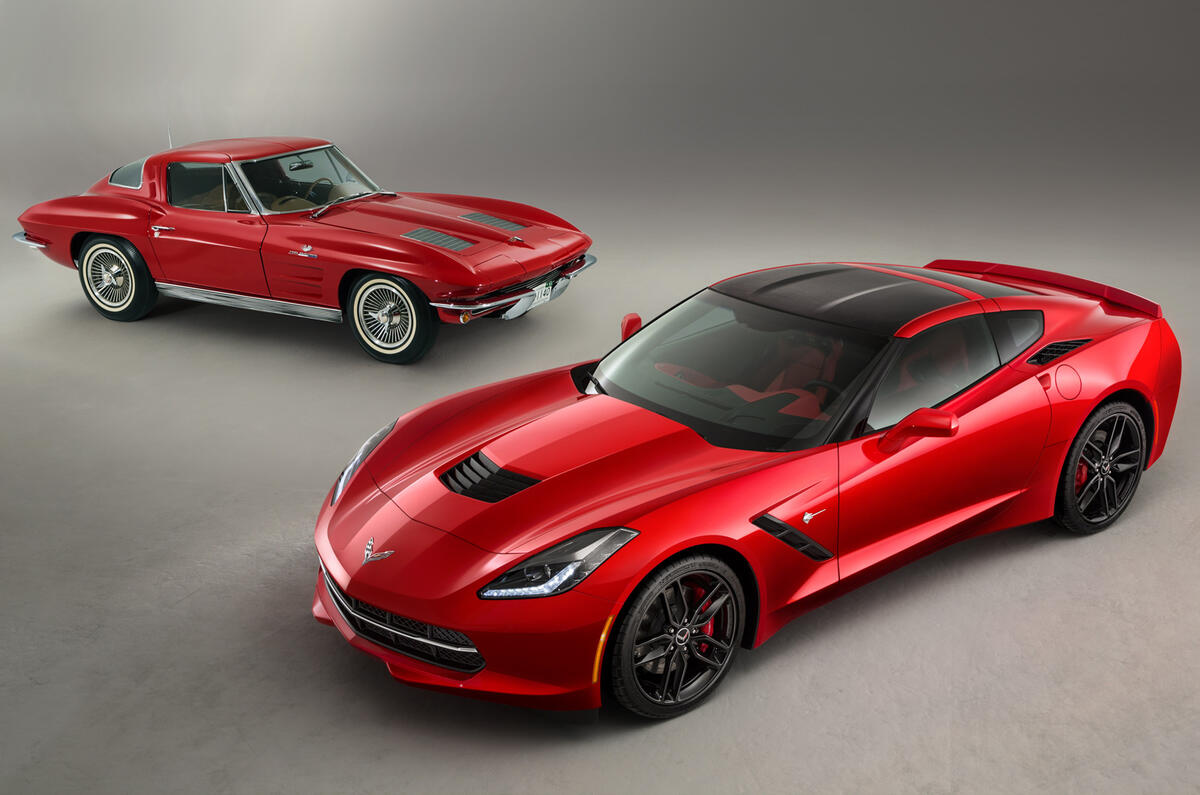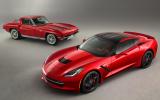The all-new 2014 Chevrolet Corvette Stingray, the seventh-generation of America’s most iconic sports car, is the homegrown star of the Detroit motor show.
The new 450bhp 6.2-litre V8-powered Stingray is the most powerful standard version of the ‘Vette ever in its sixty-year history, and is also the most advanced yet with technology including a lightweight aluminium structure, part-carbonfibre bodywork and a seven-speed manual gearbox. The Stingray name also returns to the Corvette for the first time since 1976.
While the look and shape of the new 4495mm long, 1877mm wide and 1235mm high Stingray is instantly recognisable as Corvette despite its new international flavour, the technology underneath breaks new ground for the the front-engined, rear-drive sports car.
At the heart of Stingray is a completely reworked version of General Motors’ familiar 6162cc small-block V8. The 450bhp direct-injection LT1 aluminium engine with continuously variable valve timing also produces 450lb ft, with low-end torque between 1000-4000rpm said to match that of the larger 7.0-litre LS7 V8 from the current Corvette Z06.
The engine, which is also said to be more efficient than ever, can be hooked up to either a six-speed automatic with paddle shifters or a new seven-speed manual, only the second gearbox of its type after the Porsche 911. This transmission has an ‘Active Rev Match’ system that automatically blips the throttle to match the engine speed for both upshifts and downshifts.
No performance figures for the Stingray have been revealed, but insiders have said a 0-60mph time of less than 4.0sec is expected.
Chevrolet has confirmed a new ‘Drive Mode Selector’ with five distinct driving modes: Weather, Eco, Tour, Sport, and Track. This selector controls and changes 12 different attributes, including throttle response, steering feel and the traction control system.
The steel underbody structure of the current C6 sixth-generation model is eschewed for a new aluminium structure that’s 57 per cent stiffer and 45kg lighter. The use of carbonfibre for the bonnet and removable roof panel, and other composite materials for the key body panels, helps shed a further 17kg off the old model.
Chevrolet has not announced a kerb weight, but these weight savings in the body along with further weight saving for components including the suspension and engine will ensure it comes in below 1400kg, enough to give a better power to weight ratio that standard versions of the Porsche 911 and Audi R8.























































































Join the debate
Add your comment
They really cant be serious.
They really cant be serious. It looks awful, Camaro rear end, squashed Nissan GTR centre section and a Jag F type front. Cant someone actually design something WITHOUT copying bits of other designs ?
Long Live The Clutch Pedal!
See above
VL
New Corvette
Like it, but it is the first Corvette that could be mistaken for another brand. Part of the Corvette mistique is its separateness from the rest of the sports car world and that's been diluted here.
Still probably the best yet if you're behind the wheel.